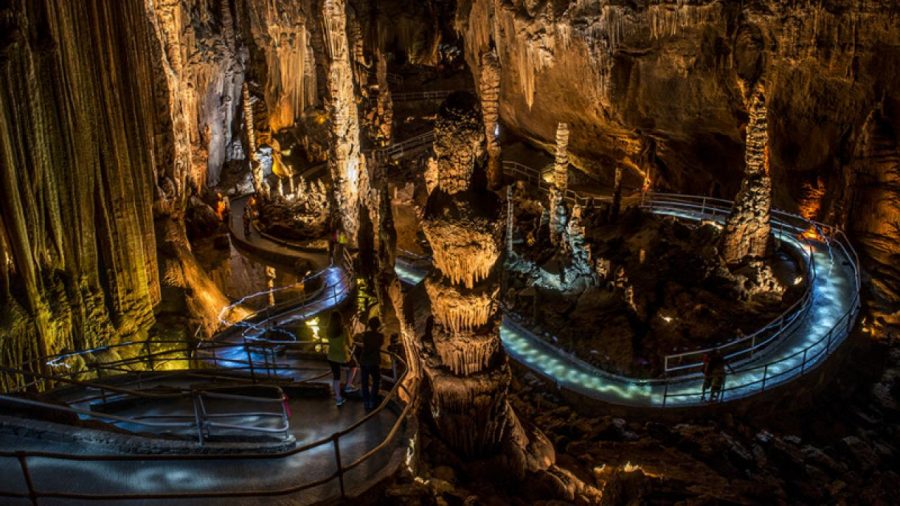Covid-19 affects students’ learning and outside experiences
The Blanched Springs Caverns in Mountain View are just an example of an experience students could be missing out on. Zoom meetings and pictures can’t replace the memories made within an outside experience.
December 14, 2020
Field trips used to be an easy experience. A paper was handed out to inform the students’ guardian/s about transportation, location, and time of the trip. Buses would be provided for the number of students attending, and a guide or two would show everyone around the area with a lesson meant to draw in the students. Memorable trips such as exploring a cave, walking through a part of the Oregon trail, museums, and so many more have been experienced since a very young age. These trips were used to indulge the students and get them moving – getting out of their seats and learning within a different environment.
However, these experiences have been hindered by Covid. Masks no longer seem strong enough to allow students and staff into places like a science hall or a museum. Buses are no longer provided for classes, and students finding their own transportation is made off-limits. These limitations were made to assure students that attend classes are made to stay in these classes, but these rules keep trips to a museum or a science hall completely out of reach.
Now, most teachers have simply stopped taking their classes on field trips. Zoom meetings– the very same technique used when students are in quarantine–are the new way of gaining an experience ‘outside’ of class. These meetings do provide information that the teacher did not, or can not, provide themselves. Occasionally, visual images of the topic are also provided (fossils, maps, models, etc.), but many of the employees offering online experiences do not move away from one small station. The only pictures that are normally provided during these meetings are drawings or small models that lay on the presenter’s work area.
These virtual field trips contain all the technical difficulties of Zoom meetings. Audio easily cuts out, taking away information that may or may not be important to the lesson. Kids that truly find an interest in gathering information miss out on certain names or descriptions that leave them confused and defeated. Papers that are provided during the meetings are also hard to fill when the audio cuts out behind a piece of paper or the presenter turns their head away from their device’s speaker. Other issues include the students’ inability to ask questions, or their struggle of listening through echoing audio as their peers join the same meeting only a few feet away.
Zoom meetings also mean that time is cut short. Normal field trips cut through the classes’ day, giving them hours upon hours to steadily guide through the field and learn as much as possible. Zoom meetings aren’t considered a field trip and are expected to keep to the original 80 minutes of class. This makes the presenter speed through the entire thing, leaving information out or talking too fast for students to note things down and truly understand. Even then, the subject the speaker is going over is normally not fully completed. Sets of work are still standing out, where the teacher has to either fill it in or give the entire class an excused grade on a part of the assignment.
The only other options for the trips are spending 80 minutes of class time by walking to the destination carrying their supplies and walking back.

